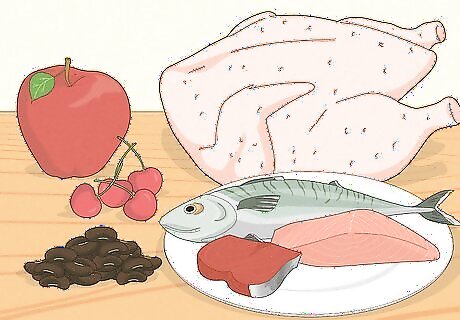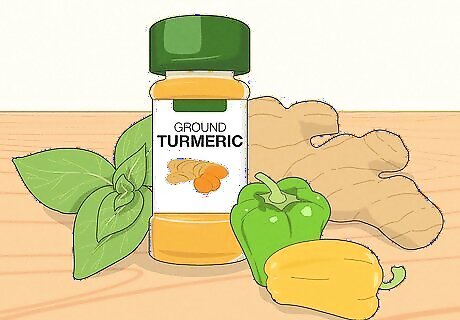
views
- The Kapha Dosha represents your relationship to the natural world, mental stability, energy levels, and strength.
- If you’re primarily a Kapha Dosha type, you’re likely bigger, taller, and more relaxed than other people.
- Reign in an unbalanced Kapha Dosha by eating fresh, warm food and being active every day.
What is Kapha Dosha?

Kapha is one of the three Doshas in Ayurvedic medicine. Ayurveda is an ancient form of medicine that was invented over 3,000 years ago in India. The Kapha Dosha is connected to earth and water. It controls your relationship to nature, mental stability, energy levels, and strength. Basically, Kapha is your connection to the world around you and your world’s connection to your body. Everybody has three Doshas (the other two are Pitta and Vata), but everybody has a unique natural balance between the three with one Dosha being their primary “type.” The Ayurvedic system is based on five elements—earth, air, water, fire, and ether. These five elements contribute to three doshas that contribute to your mind and body’s wellbeing. “Dosha” is a Sanskrit word that basically translates to “that which can cause problems.”
Kapha Dosha Characteristics

Spiritually, Kapha types are courageous and full of love. Being rooted in nature, Kapha doshas are all about the tensions and tranquilities of the natural world. People with a Kapha type are known for their sympathy, strength, and steadfastness. They’re also often very: Tolerant and friendly. Easy-going and laidback. Prone to bouts of lethargy. Affectionate, romantic, and expressive.

Physically, Kapha types tend to be physically larger. Kapha types do not have the fastest metabolism, so they tend to be a little bigger and rounder in the face. In addition to their size, Kapha types also tend to have hotter skin than most people. They also tend to retain fluids more than other Dosha types, so they’re usually not very thirsty. Kapha types are also usually: Slow to digest food. Prone to want pungent, salty, or sweet foods. Able to sleep for longer periods of time. Physically well-built and strong. Likely to have luxurious, voluminous hair, a soft voice, and big eyes.
Symptoms of Kapha Imbalances

If your Kapha is imbalanced, you’ll feel sick and slow. Your Kapha Dosha is chiefly responsible for the way your body processes everything that goes into it—both physically and spiritually. It is you and your relationship to the nature around you. As a result, if your Kapha Dosha is too high or low, you’ll really feel it. You may also notice: You feel sluggish, tired, and slightly sad for reasons you can’t quite pinpoint. It’s harder to digest food and your stool is loose. You have strong food cravings. Your seasonal allergies act up and you have more mucus than normal. You get brain fog and feel especially stubborn or sentimental.
Balancing Your Kapha Dosha

Get regular exercise. Excessive Kapha Dosha leads to a slow metabolism, so staying active is essential. Make an effort to exercise at least 15 minutes a day. Even if you aren’t doing intense workouts, at least take a walk, ride a bike, do some gardening, or clean your home daily to stay moving.

Keep your home warm. Kapha Dosha has a cooling effect, which is why people with a Kapha Dosha type tend to be a little larger and slower. To counteract that cooling impact, stay warm! Turn your home’s thermostat up to 70–74 °F (21–23 °C), wear multiple layers, or use a space heater to keep your bedroom war. If you’re going out in the winter, wear a thick coat, thick pants, boots, and a scarf to keep your body warm. In the summer, open your windows and only run air conditioning if you’re unable to focus or fall asleep.

Try new things. The Kapha Dosha is one of nature and tranquility. As a result, someone with an imbalanced Kapha will be likely to stay at home and relax. The best way to shake your way out of this is to experience new things. Try new restaurants, make new friends, and visit parts of your neighborhood or city you’ve never been to. The best way to ensure you do new things is to do something social every single day and to say “yes” to every invitation you get.

Go to bed and wake up early. Oversleeping and staying up late can contribute to a lower metabolism, which only accelerates any Kapha imbalances you already have. Improve your sleep hygiene by going to bed early and getting up early. This might be tough to do at first—especially if you’ve got a knack for staying up too late. But once you get through the first few days, it’ll be a lot easier!

Rub your joints and do controlled breathing. If you feel tired or sad and you don’t really know why, it’s likely that your Kapha Dosha is out of whack. Grab a moisturizer or massage oil and gently work the lubricant into your knees, elbows, shoulders, and hips. If the malaise feels more emotional, do some controlled breathing exercises. If you’re struggling to shake some sadness and you just can’t do it no matter what you do, reach out to a professional therapist or councilor.

Fill your home with stimulating aromas. Burn incense sticks or light candles that will give your living space an expressive and vibrant feeling that will combat any cold or slowing vibes. Eucalyptus, lavender, grapefruit, rosemary, sage, and mustard are all phenomenal options!
Dietary Guidelines to Balance Kapha

Eat plenty of warm food. As the coldest Dosha, your Kapha Dosha is cultivated by a diet full of cold foods and drinks. Counteract that by eating warm dishes. Soup, lasagna, casseroles, chana masala, chili, and sauteed vegetables are all phenomenal options. Spice is another good way to get the “heat” you need! If you’re going to have a refreshing salad, add a dash of cayenne pepper if it’ll work.

Incorporate fresh, light ingredients in your diet. As best as you can, avoid heavy and overwhelming dishes and ingredients, like ribeye, meatloaf, omelets, heavy cream, or potato. Instead, choose foods that aren’t going to leave you sleepy. Aim to eat more: Apples, limes, peppers, artichokes, and cherries. Black-eyed peas, garbanzo beans, and black beans. Lean proteins like fish, chicken, and tofu.

Avoid oily foods, dairy, alcohol, and avocados. These foods and drinks are uniquely “slowing” for the Kapha Dosha, so minimize how much of each you consume. If possible, cut them out entirely until you feel your Doshas realigning and rebalancing. Milk, in particular, is especially unique in Ayurveda. It raises the Ojas, which are the link between your digestion and happiness. Since the Kapha Dosha is distinctly sensitive to your digestion, avoid milk if you can.

Use warming spices and herbs. Cinnamon, ginger, pepper, clove, turmeric, oregano, and cardamom all have a sharp, heating quality to them. They warm the throat and soften the spirit. Use these spices and herbs when you’re cooking or making tea to ensure your Kapha doesn’t spin out of control.


















Comments
0 comment